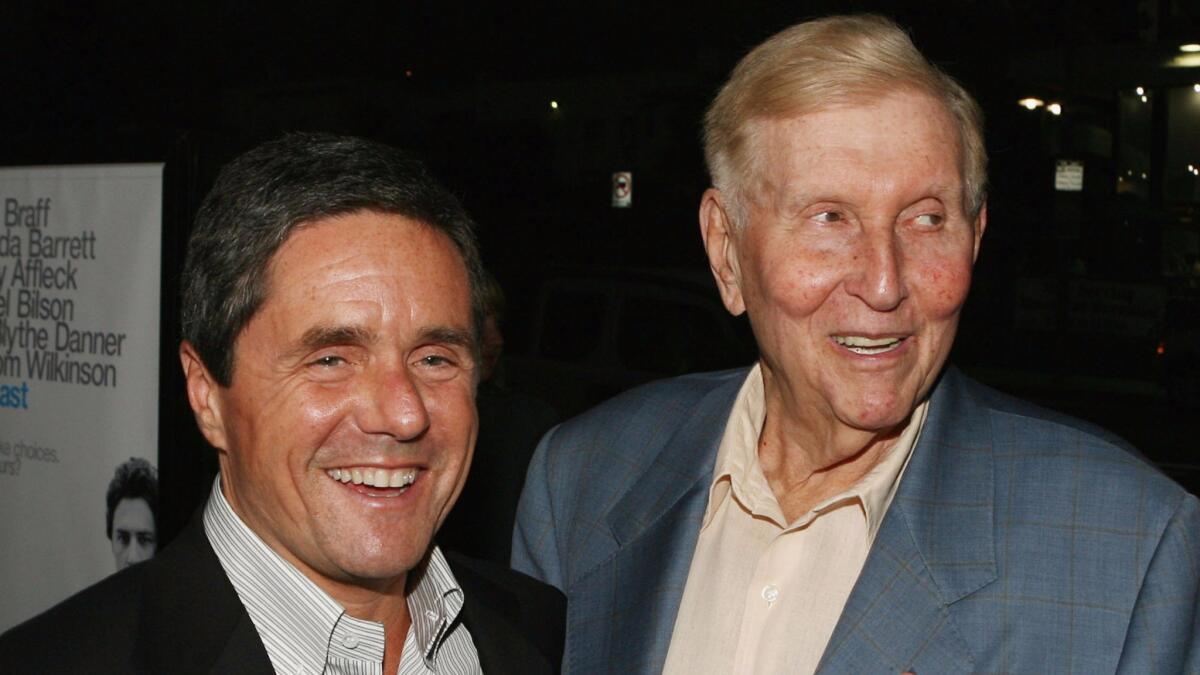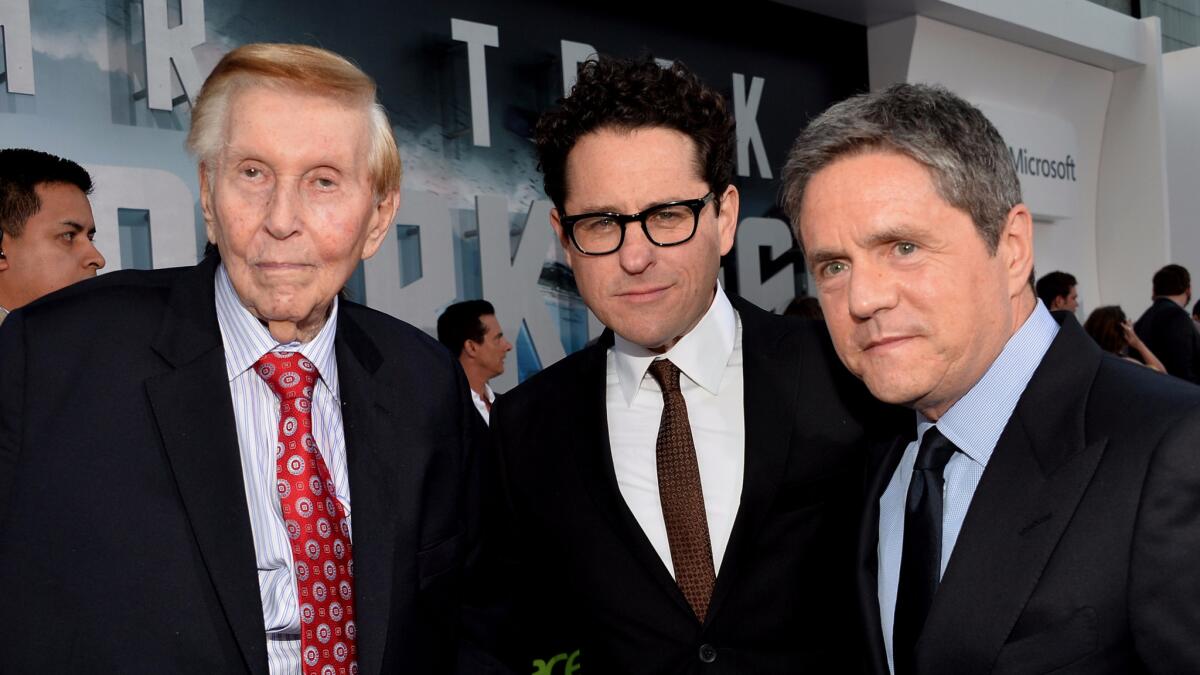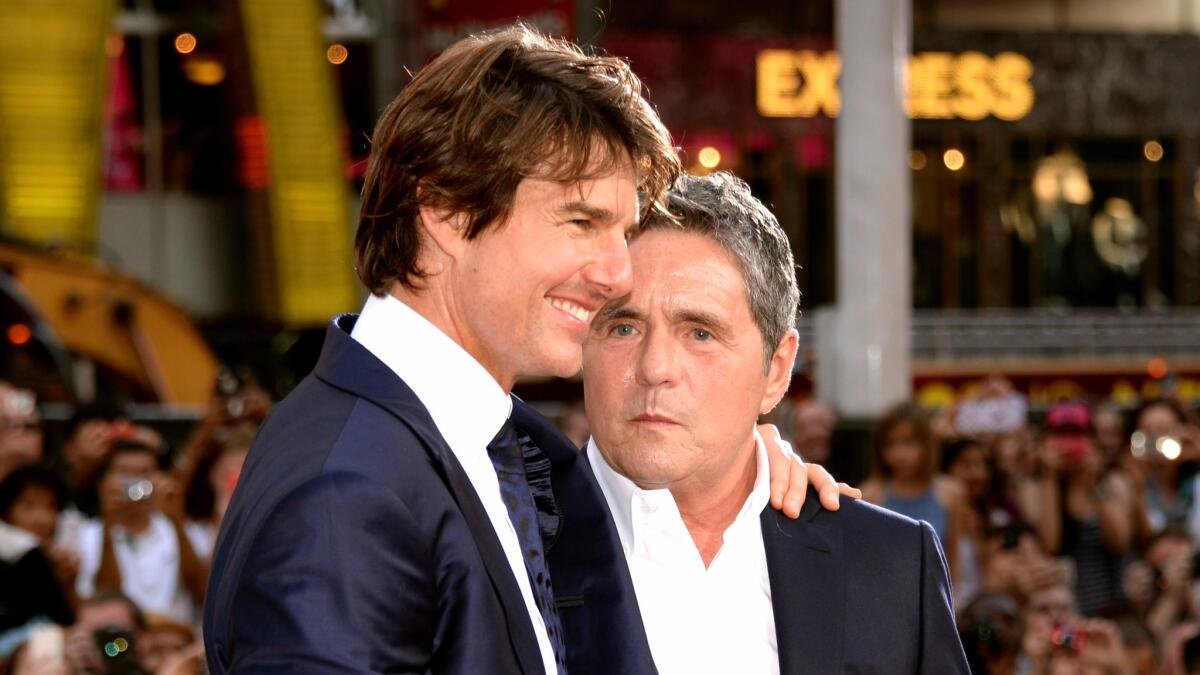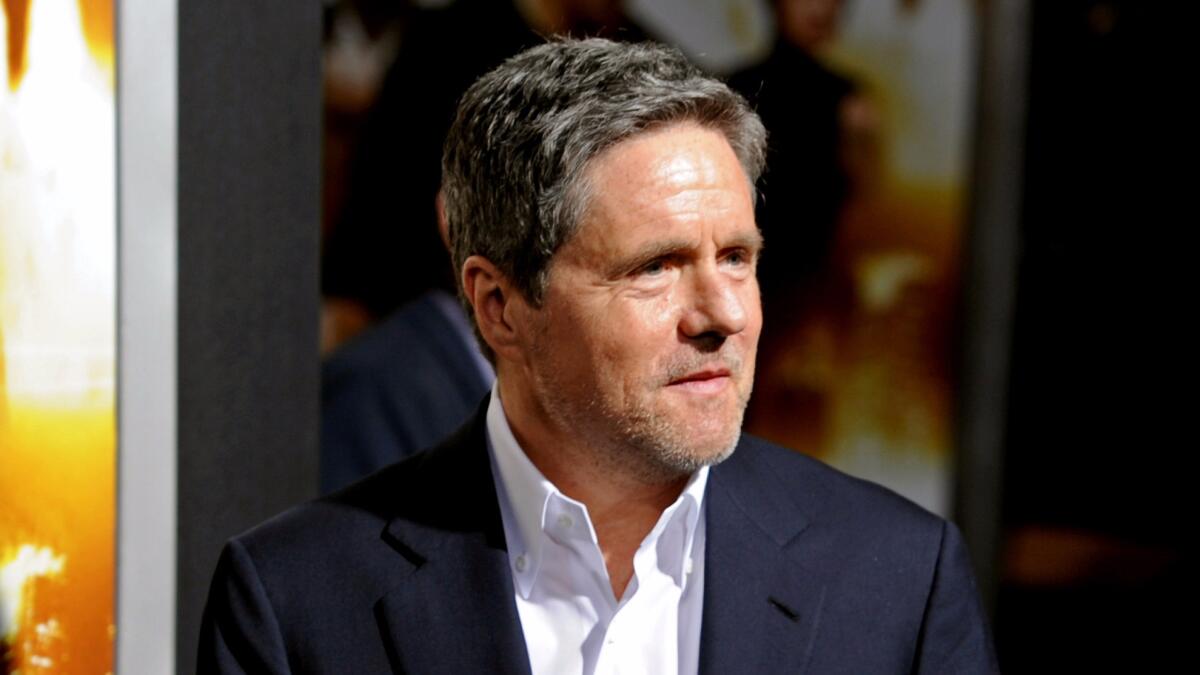Under pressure to turn his struggling studio around, will Paramount’s Brad Grey survive the turmoil at Viacom?
- Share via
Leonardo DiCaprio came to the Sunset Tower Hotel with a birthday gift for Paramount Pictures Chairman and Chief Executive Brad Grey. The actor was looking for a new home for his production company, Appian Way.
As fellow A-listers toasted the chief for his 58th birthday, DiCaprio and Grey discussed bringing Appian Way to Paramount from Warner Bros. Three months after the January bash, they announced a deal.
It was a much-needed coup for an executive who has long relied on his high-profile alliances and his old-school ability to schmooze with major Hollywood power players.
Grey’s connections have become more important than ever. He now finds himself in an increasingly delicate position as his struggling studio has become a beachhead in the war for control of Sumner Redstone’s $40-billion media empire, which includes CBS Corp. and Paramount’s parent company, Viacom Inc.
Viacom Chief Executive Philippe Dauman has proposed selling 49% of the studio to pay down corporate debt and boost Viacom’s sagging stock price. But the ailing, 93-year-old Redstone vehemently opposes the plan, putting Grey in the middle of the clash that has consumed Viacom.
The studio chief has not publicly said whether he supports the proposed sale. But some have compared Grey’s predicament to being caught between divorcing parents.
Dauman, who is Grey’s boss, is fighting the company’s controlling shareholder, Redstone, who has moved to oust Dauman from the Viacom board and a trust that will one day determine the media conglomerate’s future.

Grey long has been close to Redstone and his daughter, Shari Redstone, who is a fierce critic of Dauman. Grey was at Redstone’s mansion earlier this year when the mogul made it clear that he did not want to sell Paramount, one of his prized possessions. Last month, Grey briefly met with both Shari and Sumner Redstone when the pair paid a surprise visit to the Paramount lot.
Many analysts expect Dauman to be ousted soon, potentially leaving Grey vulnerable.
At the same time, Grey faces growing pressure to turn around his studio, which has lagged behind its rivals at the box office.
“Five years is a long time to go without righting the ship,” Los Angeles investment banker Lloyd Greif said. “Philippe hasn’t done it and neither has Brad. I think he’s exposed with a capital E.”
Paramount consistently trails its five major studio rivals. The last time it was No. 1 at the box office was in 2011, and it has since ranked at or near the bottom of the pack, a precipitous fall for the studio that made “The Godfather,” “Terms of Endearment” and “Forrest Gump.” It’s currently No. 5 this year, ahead of Sony Pictures.
He has done a terrible job. They just have had a miserable run.
— Michael Nathanson, a media analyst
Although “10 Cloverfield Lane” was a low-budget hit this year, the doldrums have continued with “Teenage Mutant Ninja Turtles: Out of the Shadows” and “Zoolander 2.” The studio is expected to turn in another disappointing quarter. Wells Fargo Securities predicted that Paramount would post a $30-million operating loss in the April-June quarter, compared with a $48-million profit in the year-earlier period.
“He has done a terrible job,” said Michael Nathanson, a media analyst with the New York firm MoffettNathanson Research. “They just have had a miserable run.”
Paramount is approaching a pivotal test as it prepares to debut the high-profile sequel “Star Trek Beyond.” Analysts are unsure of the box-office prospects for the big-budget film, which debuts July 22 and could fall short of the opening for 2013’s “Star Trek Into Darkness.” And the upcoming remake of “Ben-Hur” could prove a costly flop.
Further box-office stumbles would put more pressure on Grey.
“Everyone goes through peaks and valleys,” said “Pirates of the Caribbean” producer Jerry Bruckheimer, who signed a deal with Paramount in 2013. “They have a lot of good brands already, and they’ve kept those going, which is not easy.”
Yet Grey has developed a reputation as a Hollywood survivor. Last year, he quietly signed a new contract to extend his tenure through 2020. Viacom would not disclose Grey’s compensation, but he is said to make $10 million to $15 million a year. Grey declined to comment for this report.
He is known for maintaining important relationships with filmmakers including “Wolf of Wall Street” director Martin Scorsese, “Transformers” director Michael Bay and “Star Trek Beyond” producer J.J. Abrams.
He wants to be seen at the right place at the right time, and seen with the right people.
— One Hollywood executive

“He’s let us make movies the way we’ve wanted to make them,” Abrams said. “Brad has, for years, been so encouraging of me to do the things I want to do there.”
Grey is also famous in Hollywood for making sure he’s seated with big names at events like the Golden Globes.
“He wants to be seen at the right place at the right time, and seen with the right people,” one Hollywood executive, who spoke on condition of anonymity to protect business relationships, said of Grey.
Grey forged his Hollywood career as a talent manager and partner at Brillstein-Grey Entertainment, where he represented stars such as Brad Pitt and Adam Sandler and produced such TV shows as HBO’s “The Sopranos.”
He was hired by former Viacom CEO Tom Freston to run Paramount Pictures in 2005, replacing Sherry Lansing. Many in Hollywood questioned the pick, noting Grey’s limited experience in movies, but Viacom brass wanted a fresh perspective.
A year later, Freston was ousted after a dispute with Redstone about actor Tom Cruise, and Grey found himself answering to a new boss, Dauman.

Grey led the acquisition of DreamWorks SKG, the studio created by Steven Spielberg, David Geffen and Jeffrey Katzenberg. DreamWorks Animation supplied hits like “Kung Fu Panda,” while Grey’s deal with Marvel Studios filled Paramount’s lineup with reliable blockbusters to join its own hit series, such as “Transformers” and “Mission: Impossible.”
But the deals with DreamWorks and Marvel eventually evaporated, creating big holes in the movie pipeline.
Disney bought Marvel Entertainment for $4 billion in 2009 and 20th Century Fox wooed DreamWorks Animation over from Paramount. That came after Spielberg and Geffen had already exited Paramount after the music mogul clashed with Grey.
Other studios were investing heavily in brand-name content, but at Paramount, there was belt-tightening.
The studio’s output fell to as few as eight movies in some years, well below the level of rivals like Fox and Warner Bros. This year it will release 15 films.
Paramount’s years of frugality has made it less popular among filmmakers and agents, with some saying the studio is the last place they take their big film projects. Grey defended Viacom’s thrifty ways at the time.
“If you look at the economics, market share clearly is a barometer that people look at, but the barometer that Viacom looks at — our shareholders look at — is our margins,” Grey told The Times in late 2013.
But even by that standard, the studio faltered. In its most recent fiscal year, Paramount posted operating income of $111 million, down by nearly half from the previous year. That came after a 12% decline in profit in 2014 and 28% in 2013.
It’s unclear how much of the blame falls on Grey and Vice Chairman Rob Moore and how much stems from cost-cutting.

Grey “and his team have an A-plus lineup, considering the fact that he’s been in a next-to-impossible corporate situation with two hands tied behind his back,” said Bryan Lourd, managing partner at Creative Artists Agency, who has known Grey for more than 20 years.
Some agents said Grey is known for taking a relatively hands-off approach to the creative decisions at the company compared with other studio chiefs, such as Sony Pictures’ Tom Rothman. They say Grey is often in New York, where Viacom is based. But others add that Grey doesn’t hesitate to get involved in creative matters when needed.
He has made recent moves to boost the studio. He brought Bruckheimer on board from Disney in 2013 to reboot franchises such as “Beverly Hills Cop” and “Top Gun,” and Abrams re-upped in 2015. Grey has also bolstered Paramount’s television business, which had been neglected after CBS was spun off from Viacom 10 years ago. Its “School of Rock” Nickelodeon show launched in March, and “Grease Live” was a big ratings hit for Fox this year.
Meanwhile, Paramount employees are left wondering what’s next for the studio — and whether Grey will continue running it.
“It has the potential to regain its former prominence and return to artistic and commercial success,” said entertainment lawyer Ken Kleinberg. “It’s a great loss for the industry that the company is in disarray.”
Times staff writer Meg James contributed to this report.
ALSO
Judge denies new trial for Sumner Redstone’s ex-companion
Why Viacom Chief Philippe Dauman is fighting his longtime boss, Sumner Redstone
Viacom still working on sale of a stake in Paramount Pictures
Fox unpaid intern case is drawing to a close with proposed settlement
Broadcast and cable TV upfront ad sales end slump with 4.5% gain
More to Read
From the Oscars to the Emmys.
Get the Envelope newsletter for exclusive awards season coverage, behind-the-scenes stories from the Envelope podcast and columnist Glenn Whipp’s must-read analysis.
You may occasionally receive promotional content from the Los Angeles Times.











